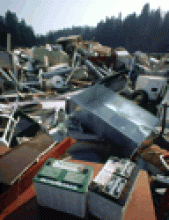- © 2006 CMA Media Inc. or its licensors
Normand Laberge has courted his fair share of controversy during his 7 years as CEO of the Canadian Association of Radiologists, but even he was surprised at the backlash when he argued in favour of offshore teleradiology as a solution to Canada's chronic radiologist shortage and growing wait times for diagnostic services.
Laberge made that case in the media (Ottawa Citizen, Oct. 22, 2006) on the opening day of CAR's annual general meeting. The article by Brad Mackay sparked outrage and prompted the Ontario Association of Radiologists to write a letter of no-confidence, demanding Laberge's immediate dismissal.
The move by the OAR (which represents about 700 of the country's 1900 radiologists) prompted an emergency president's meeting of CAR, where OAR's request was denied. Two weeks later, OAR's board of directors put the issue to a vote among its members at their annual convention. The members voted against a call for Laberge's resignation. At press time (Nov. 20), OAR was reportedly sending letters to radiologists across the country encouraging them to cancel their membership in CAR. OAR declined requests for an interview for this article.
“[Laberge] wanted to get a reaction out of them, to get them moving and he sure did. It was as bad as it could get,” says CAR President Dr. Robert Miller. “It's just a matter of change. Nobody likes change, and doctors are supposed to be the worst.” Miller asserted his confidence in Laberge, and praised his CEO's bravery in confronting difficult issues with bold ideas.
Bloodied but unbowed, Laberge admits that he was “playing with fire” when he decided to broach the contentious issue in the pages of the mainstream press. “There's a saying that if you're 20 feet in front of the troops you're the leader. If you're 40 feet in front of the troops, you're the target,” he says. “Indeed, some members of the troops now consider me a target while others consider me a leader. Sometimes as a leader your job is not to please everybody, but to make sure the right thing is done. And the right thing is to have a debate about the situation.”
At present, the debate centers on what to do about the persistent shortage of radiologists; CAR estimates Canada is about 600 radiologists shy of the full capacity of 2500. That's a shortfall of more than 25%, and one that has an identifiable impact on the health care system. For example, in Ontario the average wait time for results from a CT scan is 70 days and the wait for MRI results is more than 90 days. At Montréal's Victoria Hospital wait times for certain x-ray examinations are reaching 3 months or more, while in PEI the shortage has forced them to abandon their mammography screening program.
In 2004, CAR drafted a 5-point strategy to address the shortage. It included training more radiologists, expanding the roles of radiology technologists, controlling the demand for unnecessary tests and branching out into teleradiology. While CAR maintains it is still dedicated to teleradiology, it resolved in its October meeting to pursue domestic solutions first. This means they'll try to set up links among various provinces where radiologists with spare time can process some of the backlog from their colleagues in other time zones. They plan to have a report done of the issue by next June. Laberge, meanwhile hopes all of the dissension has had a positive side effect.
“I am very sorry and regret some of the angst I've caused to radiologists. But everyone should recognize that the next day, at least we now have a plan to increase the access to imaging services for Canadians. If that's the outcome of all the angst — then so be it.” — Brad Mackay, Ottawa

Figure. Canada has a shortfall of about 600 radiologists. Photo by: Getty Images











